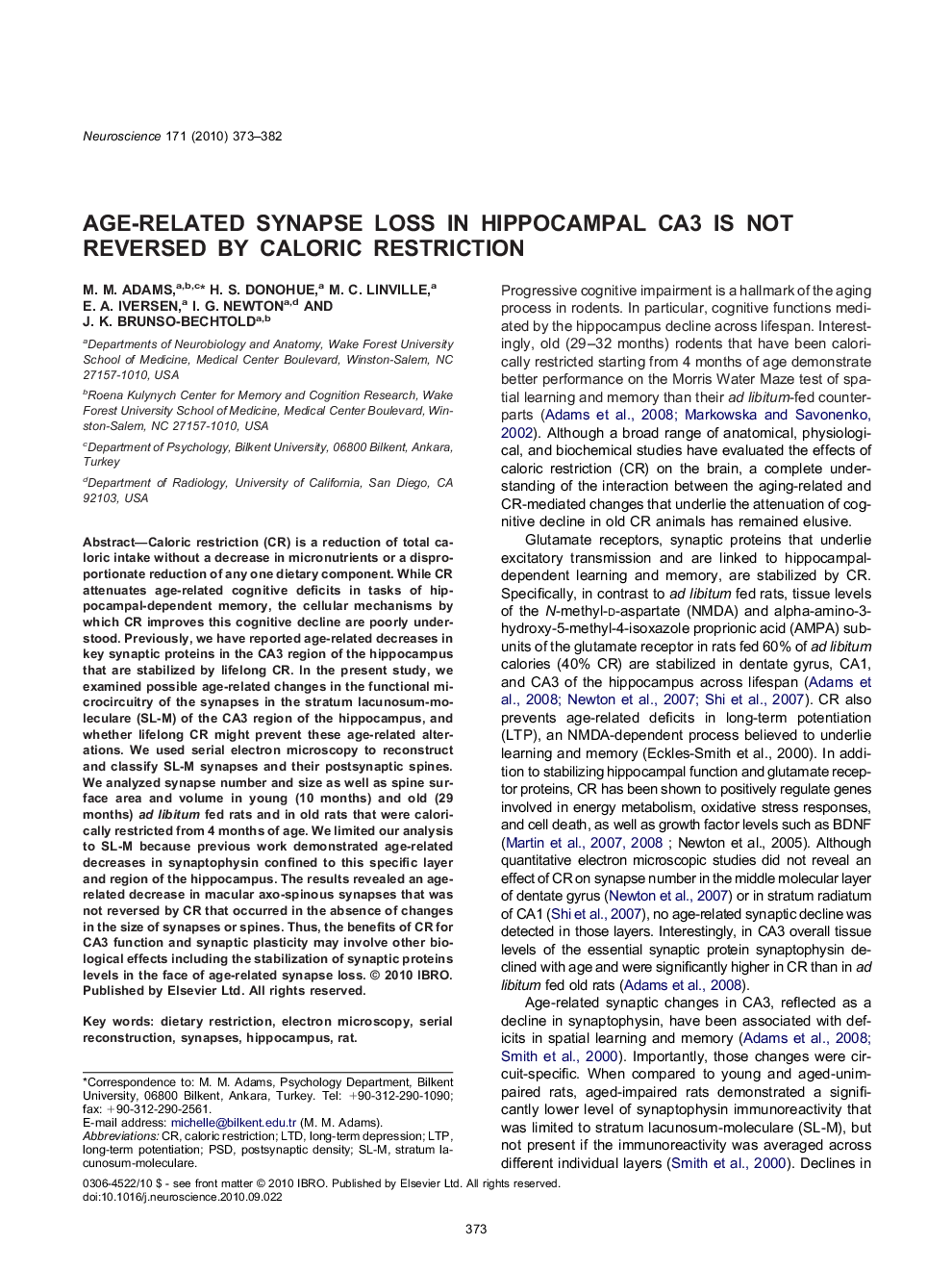| کد مقاله | کد نشریه | سال انتشار | مقاله انگلیسی | نسخه تمام متن |
|---|---|---|---|---|
| 6276734 | 1295742 | 2010 | 10 صفحه PDF | دانلود رایگان |
عنوان انگلیسی مقاله ISI
Age-related synapse loss in hippocampal CA3 is not reversed by caloric restriction
دانلود مقاله + سفارش ترجمه
دانلود مقاله ISI انگلیسی
رایگان برای ایرانیان
کلمات کلیدی
PSDlong-term depression - افسردگی طولانی مدتpostsynaptic density - تراکم Postinapticlong-term potentiation - تقویت درازمدتLTP - تقویت طولانی مدت یا LTP Synapses - سیناپس هاStratum lacunosum-moleculare - لاکونوسوم-لایه لایه مولکولیLTD - محدودdietary restriction - محدودیت غذاییcaloric restriction - محدودیت کالریRat - موش صحراییElectron microscopy - میکروسکوپ الکترونیHippocampus - هیپوکامپ
موضوعات مرتبط
علوم زیستی و بیوفناوری
علم عصب شناسی
علوم اعصاب (عمومی)
پیش نمایش صفحه اول مقاله

چکیده انگلیسی
Caloric restriction (CR) is a reduction of total caloric intake without a decrease in micronutrients or a disproportionate reduction of any one dietary component. While CR attenuates age-related cognitive deficits in tasks of hippocampal-dependent memory, the cellular mechanisms by which CR improves this cognitive decline are poorly understood. Previously, we have reported age-related decreases in key synaptic proteins in the CA3 region of the hippocampus that are stabilized by lifelong CR. In the present study, we examined possible age-related changes in the functional microcircuitry of the synapses in the stratum lacunosum-moleculare (SL-M) of the CA3 region of the hippocampus, and whether lifelong CR might prevent these age-related alterations. We used serial electron microscopy to reconstruct and classify SL-M synapses and their postsynaptic spines. We analyzed synapse number and size as well as spine surface area and volume in young (10 months) and old (29 months) ad libitum fed rats and in old rats that were calorically restricted from 4 months of age. We limited our analysis to SL-M because previous work demonstrated age-related decreases in synaptophysin confined to this specific layer and region of the hippocampus. The results revealed an age-related decrease in macular axo-spinous synapses that was not reversed by CR that occurred in the absence of changes in the size of synapses or spines. Thus, the benefits of CR for CA3 function and synaptic plasticity may involve other biological effects including the stabilization of synaptic proteins levels in the face of age-related synapse loss.
ناشر
Database: Elsevier - ScienceDirect (ساینس دایرکت)
Journal: Neuroscience - Volume 171, Issue 2, 1 December 2010, Pages 373-382
Journal: Neuroscience - Volume 171, Issue 2, 1 December 2010, Pages 373-382
نویسندگان
M.M. Adams, H.S. Donohue, M.C. Linville, E.A. Iversen, I.G. Newton, J.K. Brunso-Bechtold,